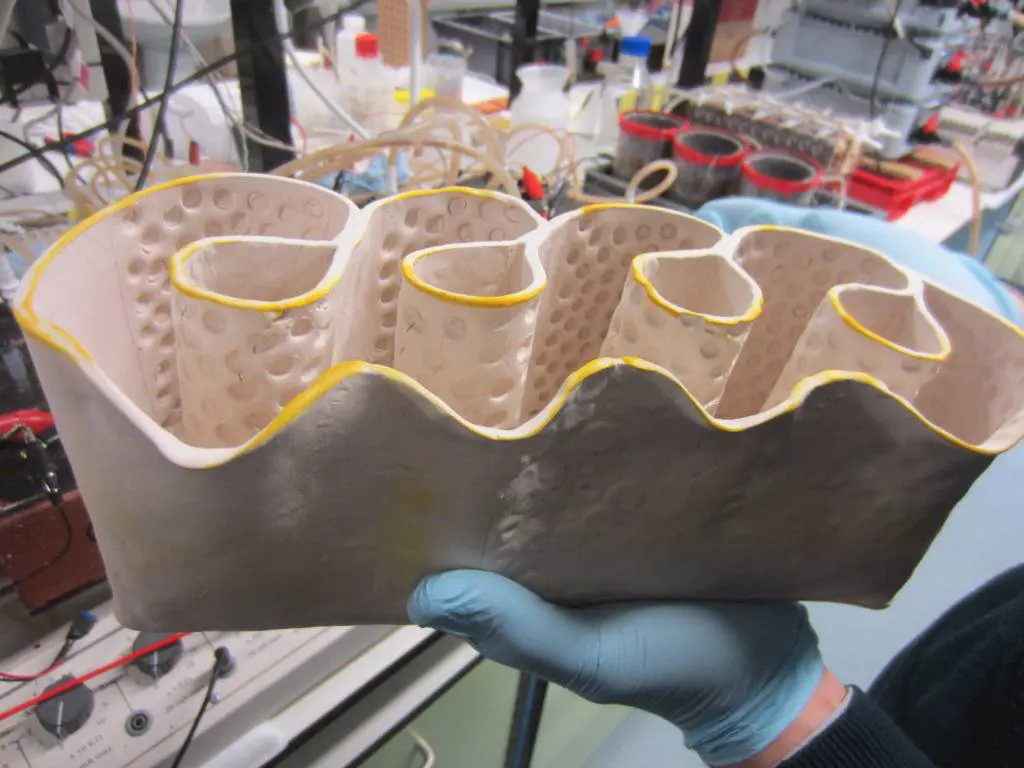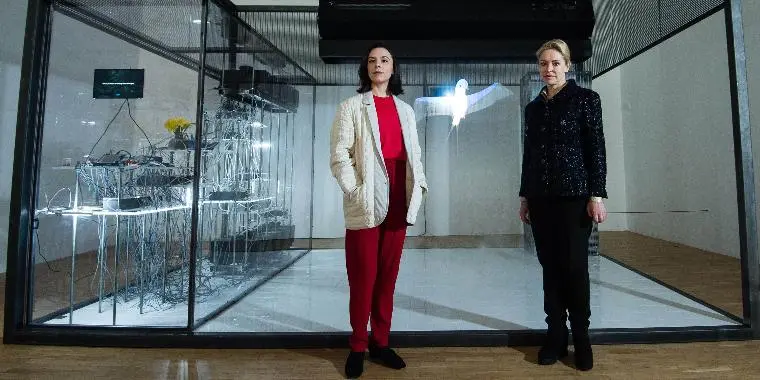
LIVING BUILDING BLOCKS: A NEW VISION FOR FUTURE HOMES
Micro-agriculture bioreactors bring green technologies to ecological architecture
Imagine the building blocks of your house acting as living creatures: sucking up waste air and water, producing mass and keeping you a bit warmer in the winter or saving on energy bills in the summer. It’s not the plot of a dystopian science fiction movie, but prototype technology for more sustainable houses of the future made of modular building blocks full of microorganisms able to use sunlight, water or air to produce heat, electricity and materials like protein and fibres.
This is one of the outcomes of the Living Architecture (LIAR) project, which is bringing together architecture, biology, computing and engineering. Funded under the EU Future and Emerging Technologies FET programme, it explores how bacteria-laden bioreactor bricks can address the impact of building in our environment, transform inert spaces, and use more sustainable solutions in our way of living through this ‘living architecture’.

The project, coordinated by Rachel Armstrong, Professor of Experimental Architecture from Newcastle University, works toward this visionary and high-risk technology using a unique mixture of biotechnology, computing and architectural design. The innovative building blocks consist of a bioreactor able to convert chemical energy produced by a pool of metabolising microorganisms into electricity, known as microbial fuel cell (MFC) technology. Patented by project collaborators at the University of West of England, their MFC system is able to sense local conditions within a building and feedback to the bioreactor to optimize the environmental impact.
One of the project’s more novel aspects is the possibility of programming these units to adapt to different contexts and needs, such as homes, offices, schools, hospitals or outdoor spaces, thanks to the customization of the pool of microorganisms which can utilize a variety of inputs (grey water, visible light, temperature, nutrients, etc.), ensuring a structural and operational flexibility.
“The Living Architecture project is going to change the way that we live through our homes, changing the domestic environment so it becomes nature space,” says Armstrong. “The presence of the building actually becomes something regenerative in the landscape and not something that necessarily harms the environment.”
During its lifetime the project has demonstrated that the innovative building block works by developing five different bioreactor module prototypes. Some were displayed in the Is This Tomorrow? exhibition at Whitechapel Gallery, London, in spring 2019.

The €3.2M project’s scientific and aesthetic achievements may pave the way to a novel scientific field. “The ambition is to develop a transferrable ecological architecture practice,” explains Armstrong. “My eyes are firmly on the architects of the future to help empower them and develop the kinds of skills that will help us discover what ecological architecture should be.” She cites an open letter currently signed by more than 1000 people from architecture schools’ staff and students, asking to the academic institutions to take into account the ecological and political basis of architecture in their education system.
The project finishes in June 2019, and the researchers will keep looking for new collaborations and grants. They aim to create new prototypes of houses open to the public to keep building a new vision for homes and cities and show the next level of urban sustainability. Not dystopian science fiction after all, but a visionary and optimist story about the future.
Photo by Michael Schiffer on Unsplash.
Disclaimer: This story was originally developed as part of the FETFX project, the predecessor of our current initiative.
